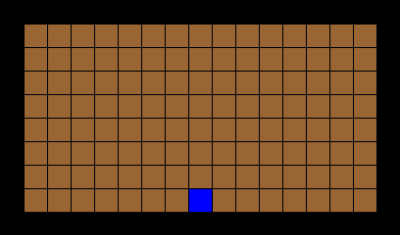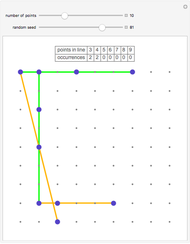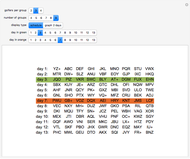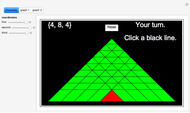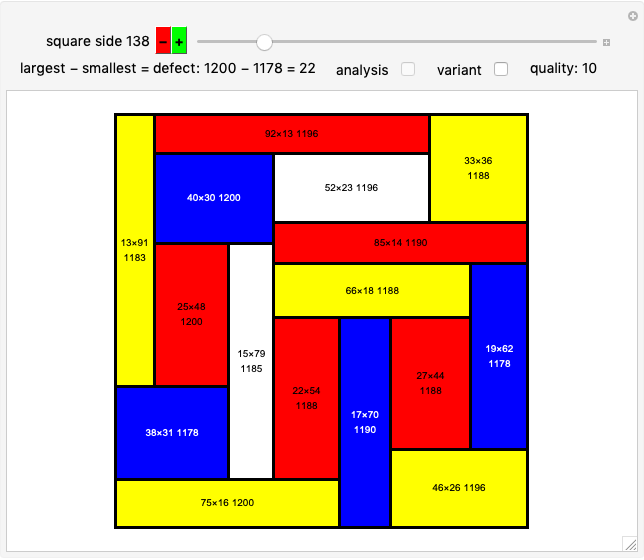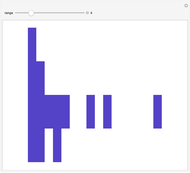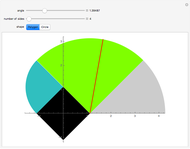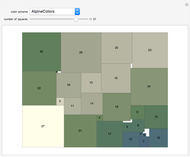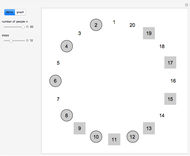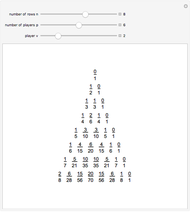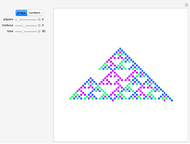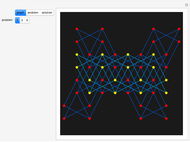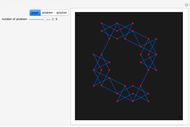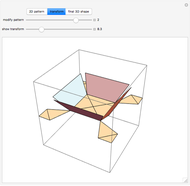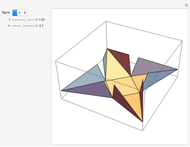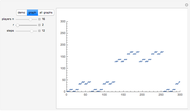A Bitter Chocolate Problem

Requires a Wolfram Notebook System
Interact on desktop, mobile and cloud with the free Wolfram Player or other Wolfram Language products.
In a piece of chocolate, the brown parts are sweet and the blue part is very bitter. This game is played by two players taking turns. Each player breaks the chocolate (in a straight line along the grooves) and eats the piece that is broken off. The player that leaves the opponent with the single bitter part is the winner.
[more]
Contributed by: Shunsuke Nakamura and Ryohei Miyadera (December 2012)
Open content licensed under CC BY-NC-SA
Snapshots
Details
You can cut the chocolate to the left, right, or above the bitter square. The triple  gives the signed distances from this square in these directions.
gives the signed distances from this square in these directions.
We define two important states:  states, from which we can force a win as long as we play correctly at every stage, and
states, from which we can force a win as long as we play correctly at every stage, and  states, from which we will lose however well we play if our opponent plays correctly.
states, from which we will lose however well we play if our opponent plays correctly.
One of the most important tasks of chocolate games is to find all the  and
and  states of a game. Usually the number of
states of a game. Usually the number of  states is small.
states is small.
In this chocolate game it is easy to find  states, since there is a formula for them:
states, since there is a formula for them:
1. The position  is an
is an  state if and only if
state if and only if  , where
, where  is the bitwise exclusive or operation (BitXor in Mathematica).
For a proof, see [1].
is the bitwise exclusive or operation (BitXor in Mathematica).
For a proof, see [1].
Once we know the formula for  states, the strategy to win is clear. Suppose that you have a
states, the strategy to win is clear. Suppose that you have a  state; you can choose a move that leads to an
state; you can choose a move that leads to an  state. After that, any move by your opponent leads to a
state. After that, any move by your opponent leads to a  state, and you can always move to an
state, and you can always move to an  state. Finally you reach
state. Finally you reach  .
.
If you have to play with an  state, you can only win if your opponent makes a mistake.
state, you can only win if your opponent makes a mistake.
This chocolate problem is presented in [1]. For the other chocolate games by the authors of this Demonstration, see [2], [3], [4], and [5].
References
[1] A. C. Robin, "A Poisoned Chocolate Problem," The Mathematical Gazette, 73(466), 1989 pp. 341–343. (An answer to the problem is in 74(468), 1990, pp. 171–173.)
[2] M. Naito, T. Yamauchi, H. Matsui, T. Inoue, Y. Tomari, K. Nishimura, T. Nakaoka, D. Minematsu, and R. Miyadera, "Combinatorial Games and Beautiful Graphs Produced by Them," Visual Mathematics, 11(3), 2009. www.mi.sanu.ac.rs/vismath/miyaderasept2009/index.html.
[3] R. Miyadera, S. Nakamura, and R. Hanafusa, "New Chocolate Games: Variants of the Game of Nim," Proceedings of the Annual International Conference on Computational Mathematics, Computational Geometry, and Statistics (CMCGS12), Singapore, 2012 pp. 122, 128.
[4] R. Miyadera, S. Nakamura, and R. Hanafusa, "New Chocolate Games," GSTF Journal of Mathematics, Statistics and Operations Research, 1(1), 2012 pp. 122, 128.
[5] T. Yamauchi, T. Inoue, and Y. Tomari, "Variants of the Game of Nim that Have Inequalities as Conditions," Rose–Hulman Undergraduate Mathematics Journal, 10(2), 2009. www.rose-hulman.edu/mathjournal/archives/2009/vol10-n2/paper12/v10n2-12pd.pdf.
Permanent Citation
